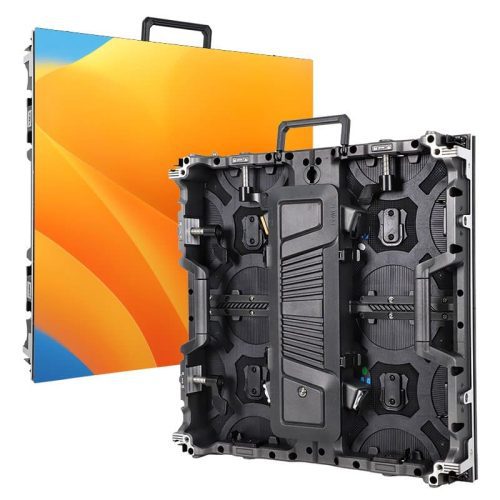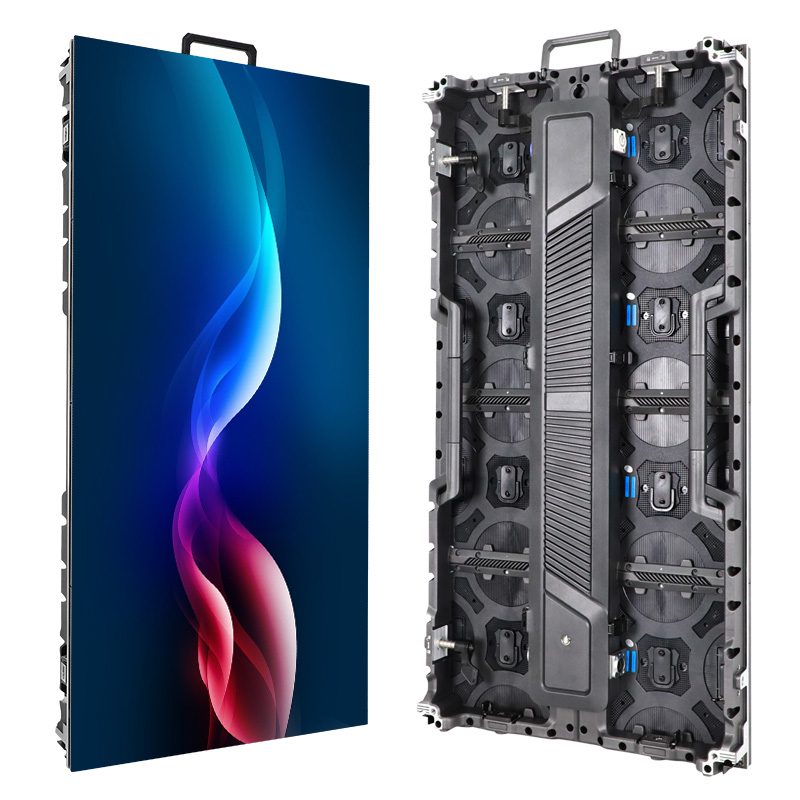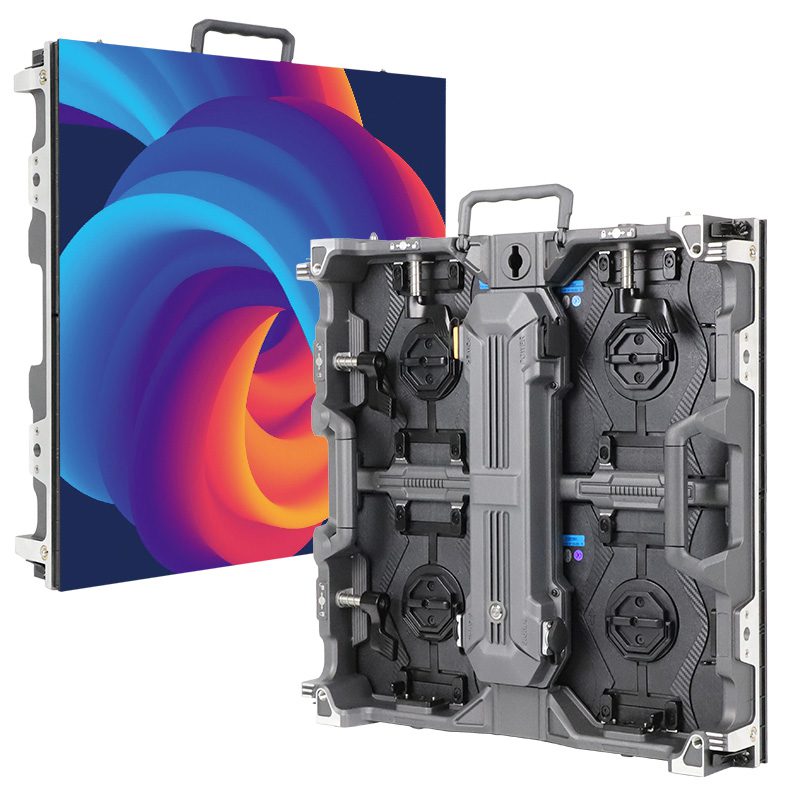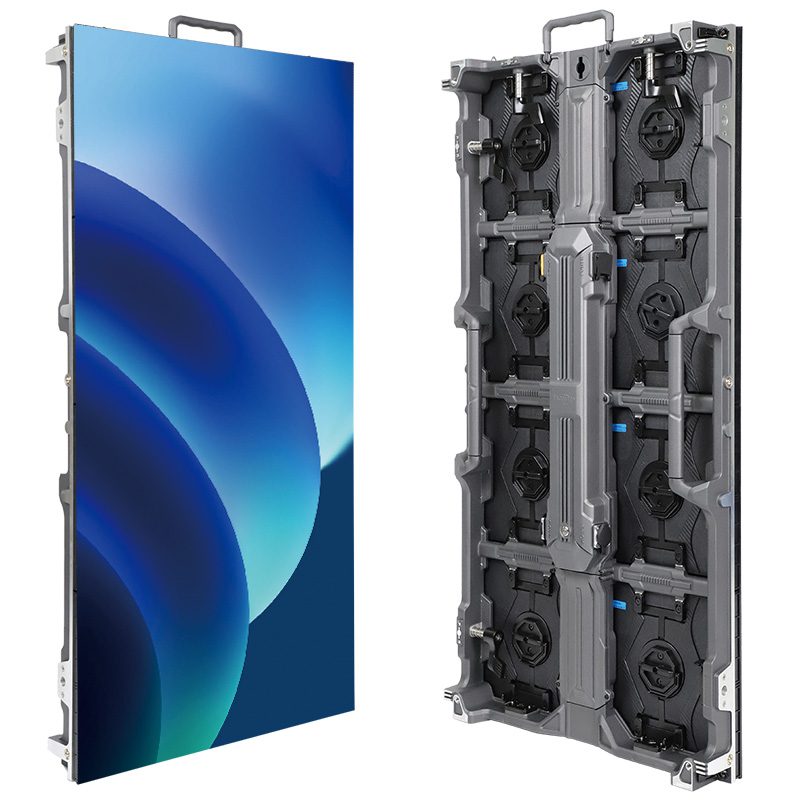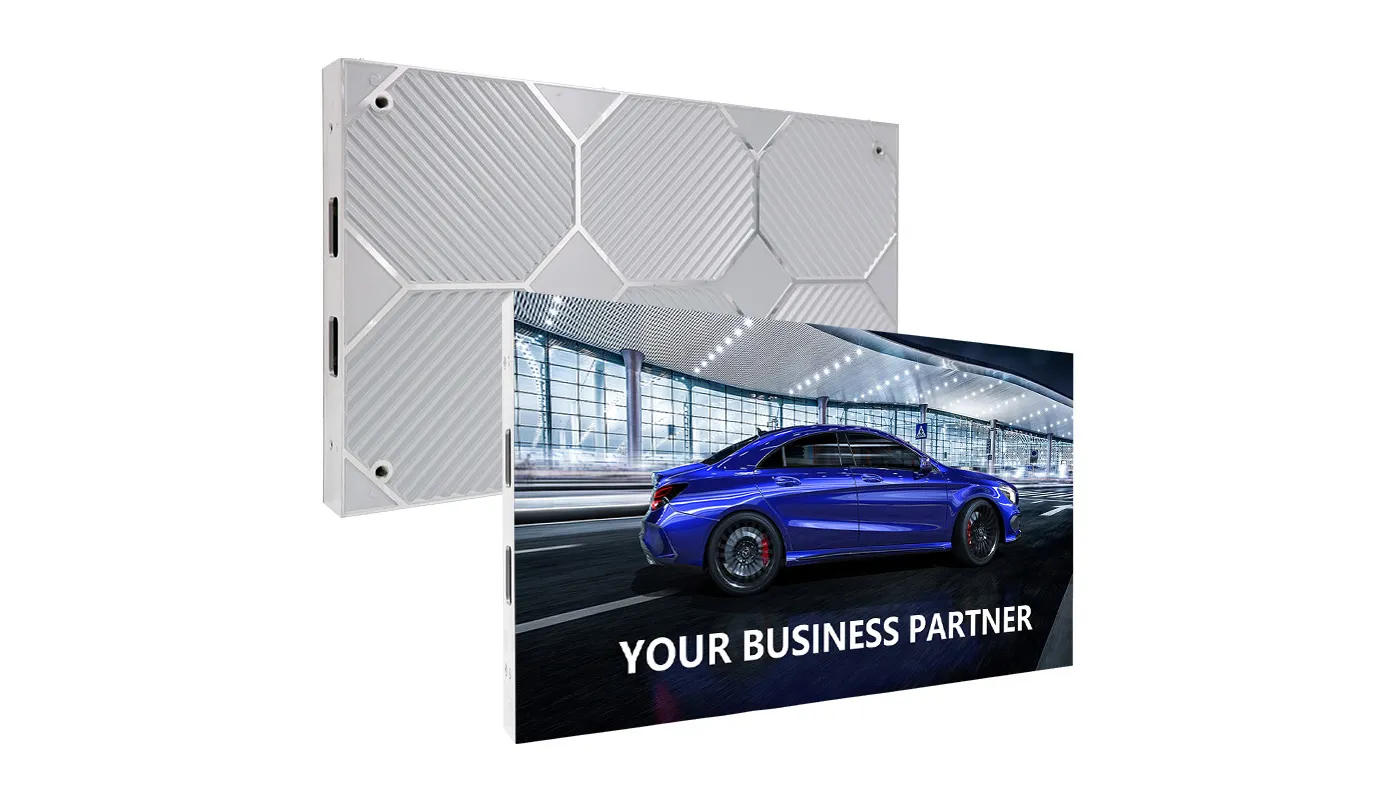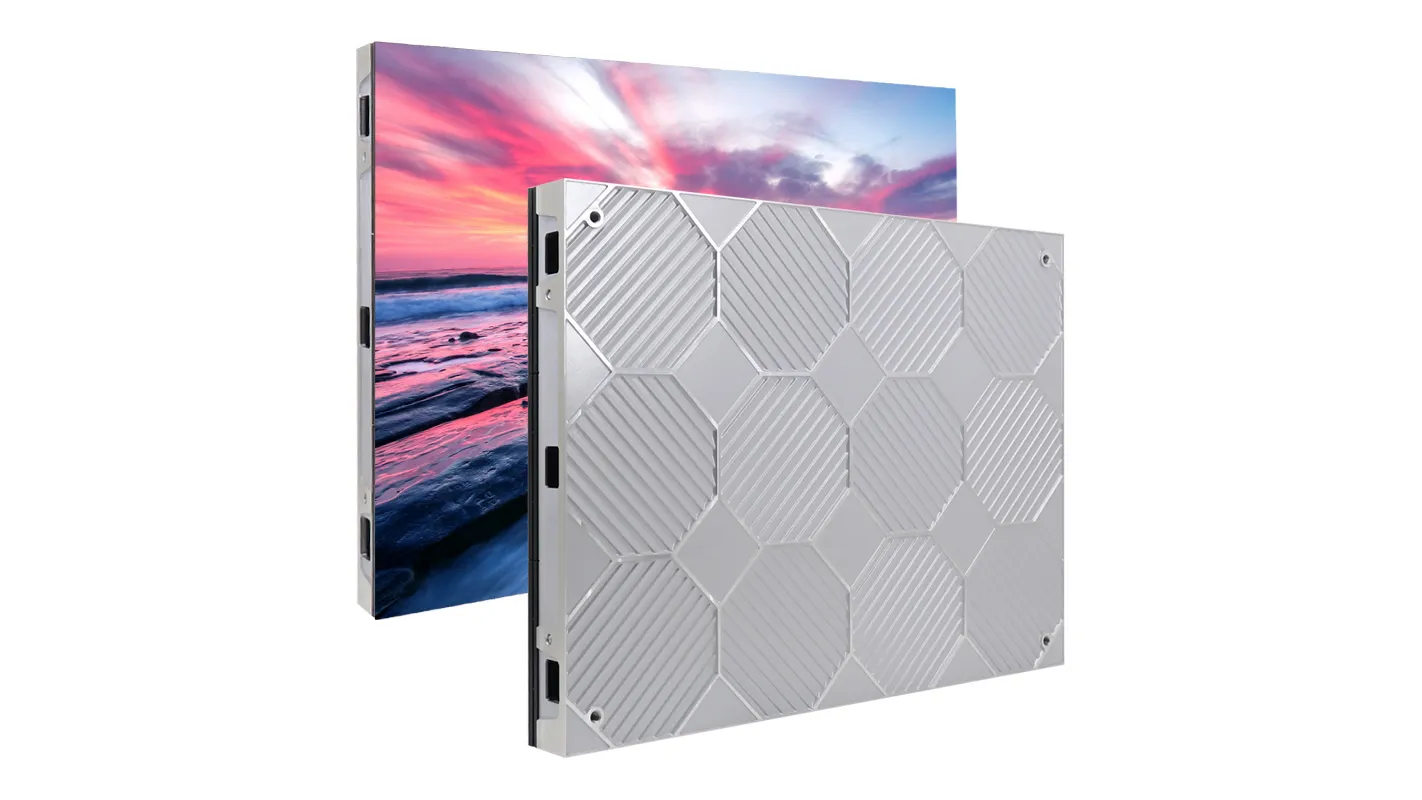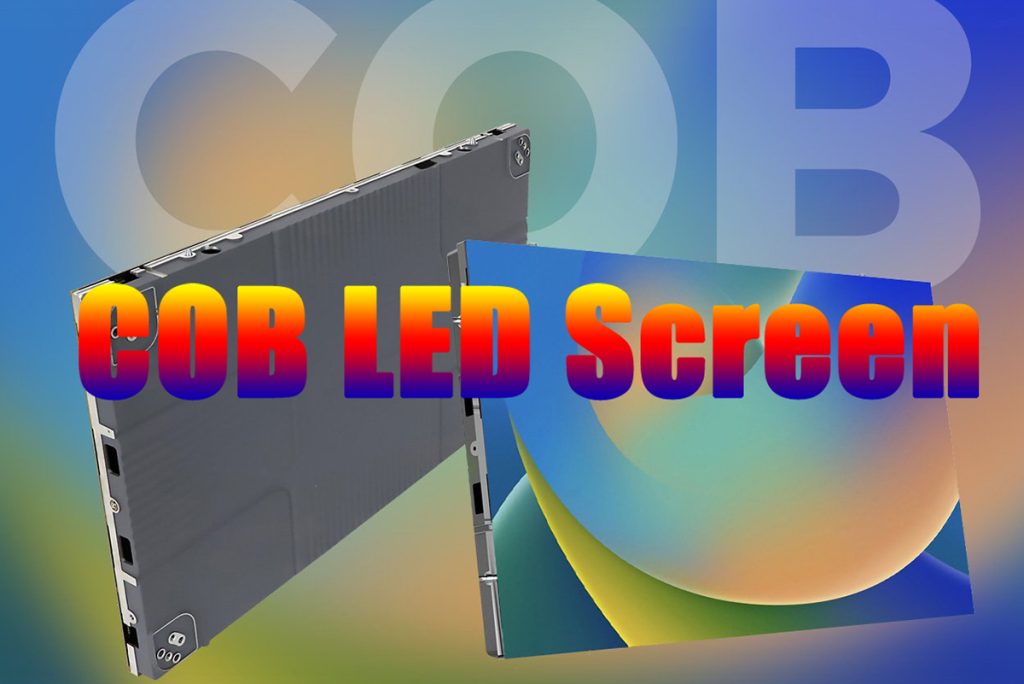Do you remember the buzz in the advertising world when the Coca-Cola 3D Robotic Sign debuted on August 8, 2017? This advertising screen was the masterpiece of the Kinetic LED Wall. By combining high-definition LED modules with mechanical movement, it made the Coca-Cola bottle “pop out” from the flat surface, simulating a floating and rotating 3D effect. This stunning visual experience not only opened new doors for advertising art but also marked a significant leap in outdoor LED display technology.
catalogue
- 1. يأتي جدار LED الحركي لإنقاذ إعلانات علامتك التجارية
- 2. ما هي شاشة LED الحركية؟
- 3. كيف يعمل جدار LED الحركي؟
- 4. كيف يمكن للعلامات التجارية الاستفادة من تقنية Kinetic LED؟
- 5. دراسة الحالة: قصص النجاح
- 6. التحديات والحلول لتنفيذ جدار LED الحركي
- 7. كيفية الاختيار: جدار LED الحركي مقابل شاشة LED التقليدية
- 8. ملخص
1.Kinetic LED Wall Comes to Save Your Brand Advertising
In the modern advertising world, capturing the audience’s attention has become an increasingly complex challenge. Traditional LED displays are everywhere, but few can truly hold the gaze of passersby.
Most advertising screens remain at the level of one-way information delivery, trying to impress viewers with exaggerated colors or noisy videos. While the content is important, without a medium that can carry creativity and express ideas more directly, busy pedestrians are unlikely to stop and take a closer look. After all, everyone’s time is precious. This one-way, static method of communication has gradually made traditional advertising screens lose their appeal.
Have you ever been frustrated by the poor performance of LED displays? As someone who seeks innovation, do you find traditional LED screens expensive and uninspired? If you’re looking for a solution that can truly attract viewers and enhance your brand image, then the Kinetic LED Wall is the answer you’ve been waiting for.
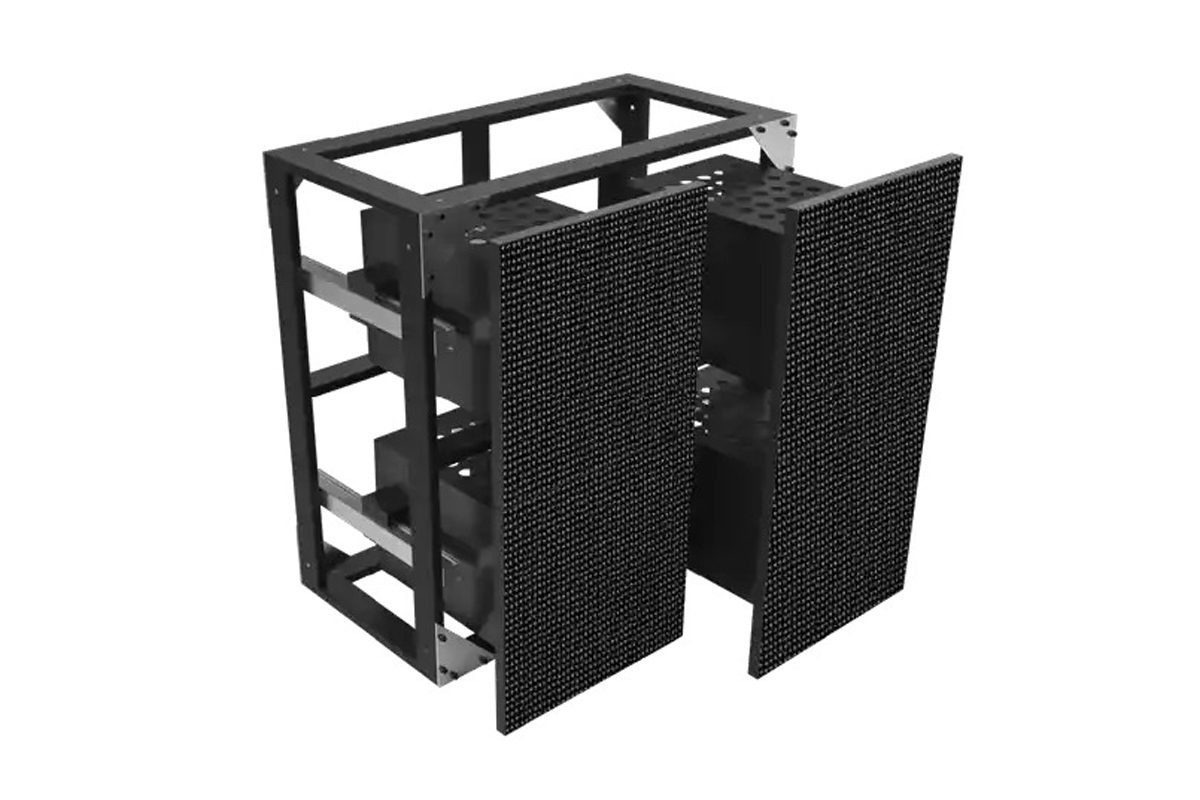
The Kinetic Screen is not just a display; to me, it’s a revolutionary advertising medium. By perfectly combining dynamic mechanical structures with LED display technology, Kinetic Display breaks the flat limitations of traditional advertising screens, creating a multi-dimensional visual experience that feels more real and cooler than 3D screens. When your ad content is no longer limited to static images but instead presented through dynamic mechanical movements and changes, how can the audience’s attention not be completely captured?
2.What is a Kinetic LED Screen?
The Kinetic Screen is like a “moving LED screen.” It not only displays video content but also performs various transformations, undulations, or movements based on pre-programmed actions, creating visually stunning dynamic effects. Unlike traditional static LED screens, the Kinetic LED Display Screen doesn’t just show content—it brings it to life through physical motion, making it truly “alive” in space. This makes advertising, art displays, or brand communication more engaging and memorable.
In a Kinetic Display, each LED screen unit is equipped with precise retractable sliding mechanisms. These mechanical movements create a sense of spatial depth, with sections that can concave or convex, ripple like waves, and form a physical 3D effect.
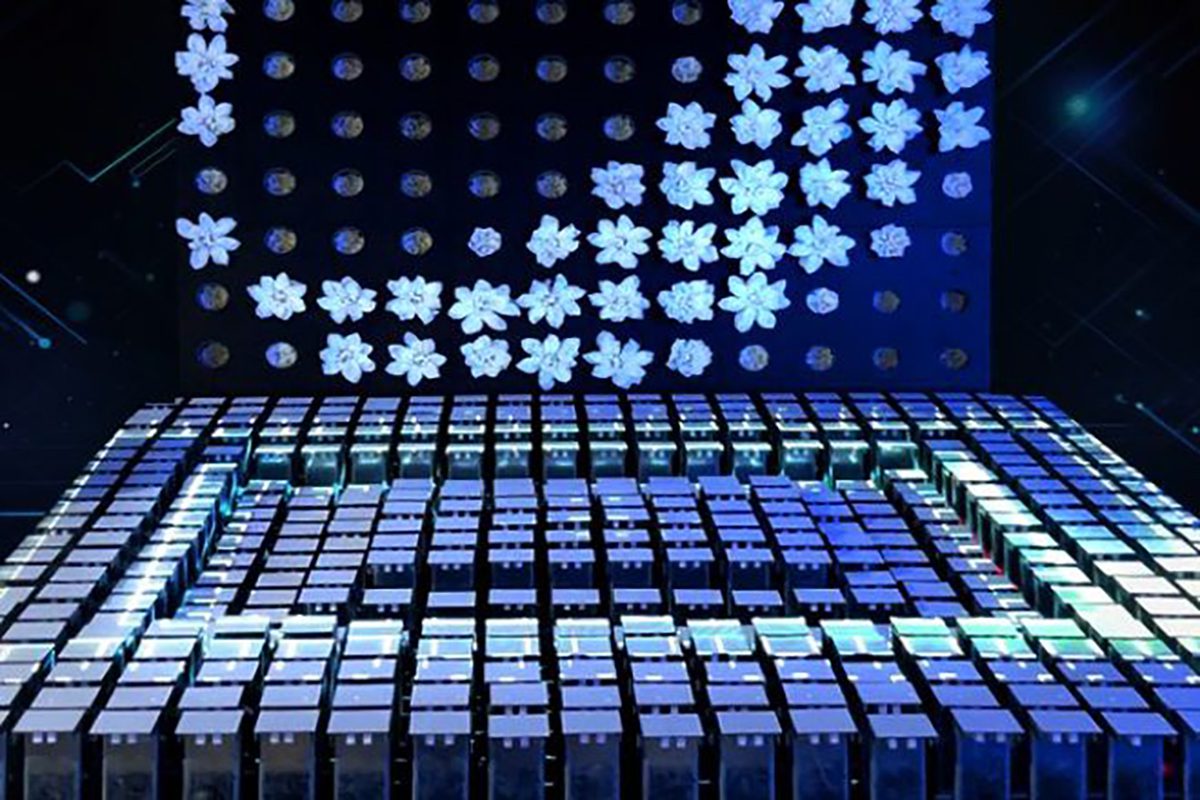
Core Features of Kinetic LED Wall:
The Kinetic LED Wall is an advanced digital art installation that combines intelligent control, mechanical motion, precise transmission, and adaptive adjustment. It is perfect for high-end applications like large stage performances, commercial exhibitions, and brand launch events.
Modular Design:
The Kinetic Screen uses a modular structure, where each unit can move independently or combine to form a larger dynamic display system. Each module acts as both a pixel and a spatial coordinate, capable of moving forward, backward, or floating in staggered arrangements to physically reshape spatial depth. When the modules rise and fall like building blocks, the Kinetic Screen becomes a “breathing” 3D structure. This design not only makes installation and maintenance easier but also allows flexible adjustments in shape and size to fit various application needs.
Precision Mechanical Drive:
High-precision motors (like servo motors) and smooth transmission systems (such as CVT continuously variable transmission) ensure the Kinetic LED Wall’s motion is seamless, without jitter or lag. With precise control algorithms, the motion accuracy reaches 0.01 seconds, perfectly syncing with music, lighting, and video rhythms. For example, during concerts or stage performances, the screen’s dynamic changes can seamlessly match the beat of the background music and the flicker of lights, creating a more immersive visual experience.
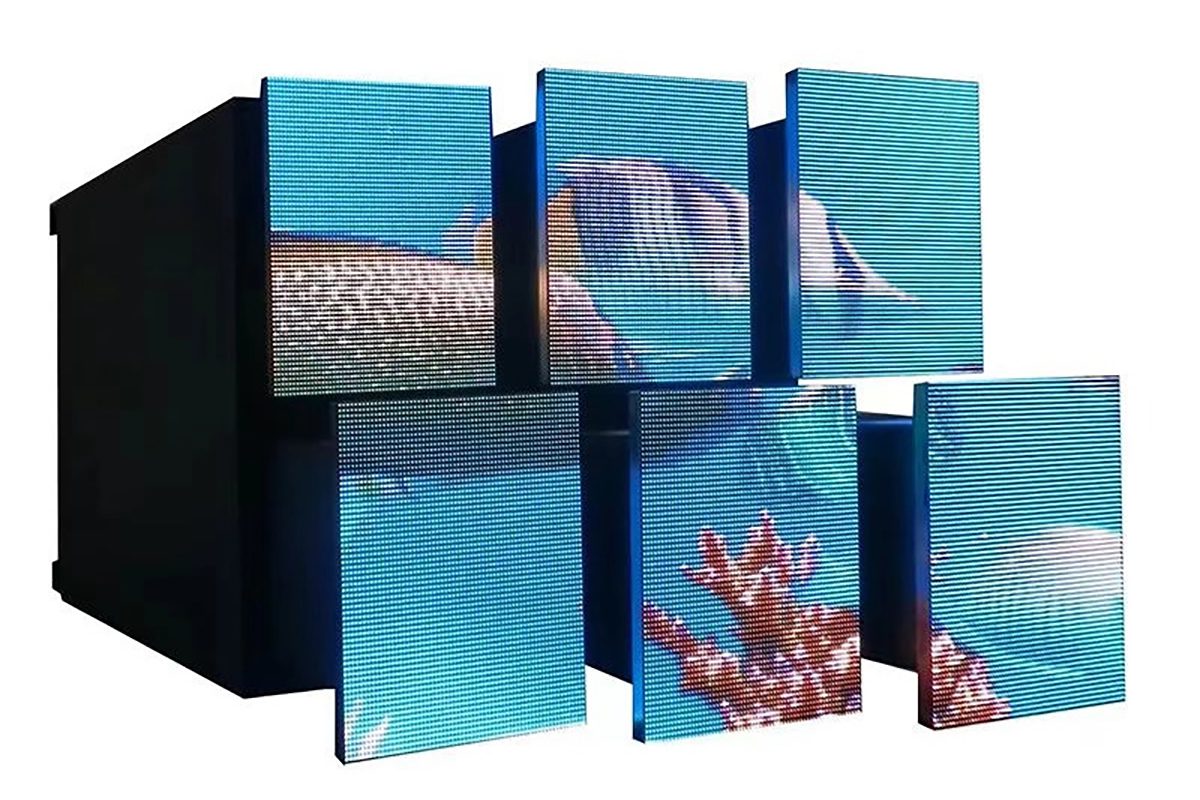
Smart Sensing:
Kinetic Display can be installed both indoors and outdoors. For outdoor environments, its intelligent environmental sensing is particularly important. It is equipped with rain, wind, and light sensors to automatically adjust brightness and motion range. For example, in rainy weather, it can adjust screen brightness or take protective measures to prevent damage to the equipment.
Adidas once used Kinetic Display for a creative showcase during a brand event. Combined with motion-sensing technology, when customers approached or waved, the LED cubes on the screen would automatically expand, contract, or even “bounce” to display the brand logo or dynamic visuals, leaving a lasting impression.
Multiple Control Methods
As a smart LED display, the Kinetic LED Screen typically supports various control methods. It can be operated via a remote control for basic functions, and it also supports remote control through a mobile app. Additionally, it can integrate with DMX control systems, video servers, and music playback devices, creating a comprehensive interaction of visuals, mechanics, and lighting.
Physical 3D Dynamic Effects
Unlike traditional static LED screens, the Kinetic LED has true physical 3D motion capabilities. Each LED module can move independently, creating multi-layered, three-dimensional visual effects. For example, it can simulate dynamic scenes like “rolling waves,” making the entire screen undulate like ocean waves. It can also achieve effects like “rising and falling blocks” or “image reassembly,” and even create futuristic 3D animations such as floating or rotating visuals.
Differences Between Kinetic LED Wall and Traditional LED Screens:
Static vs. Dynamic:
Traditional LED screens can only display content in a static manner, while the Kinetic Screen introduces mechanical movement to bring dynamic changes to the content, making it more engaging and expressive.
Flat vs. Three-Dimensional:
Although traditional LED screens can create a sense of depth using techniques like 3D effects and stereoscopic image processing, they are still limited to two-dimensional flat displays, relying on image rendering to simulate depth. In contrast, the Kinetic LED Wall breaks through these limitations. It not only displays content but also has the ability to move in three dimensions. Each LED module can move independently, creating a rich sense of space and layering, allowing the visuals to achieve a truly three-dimensional effect.
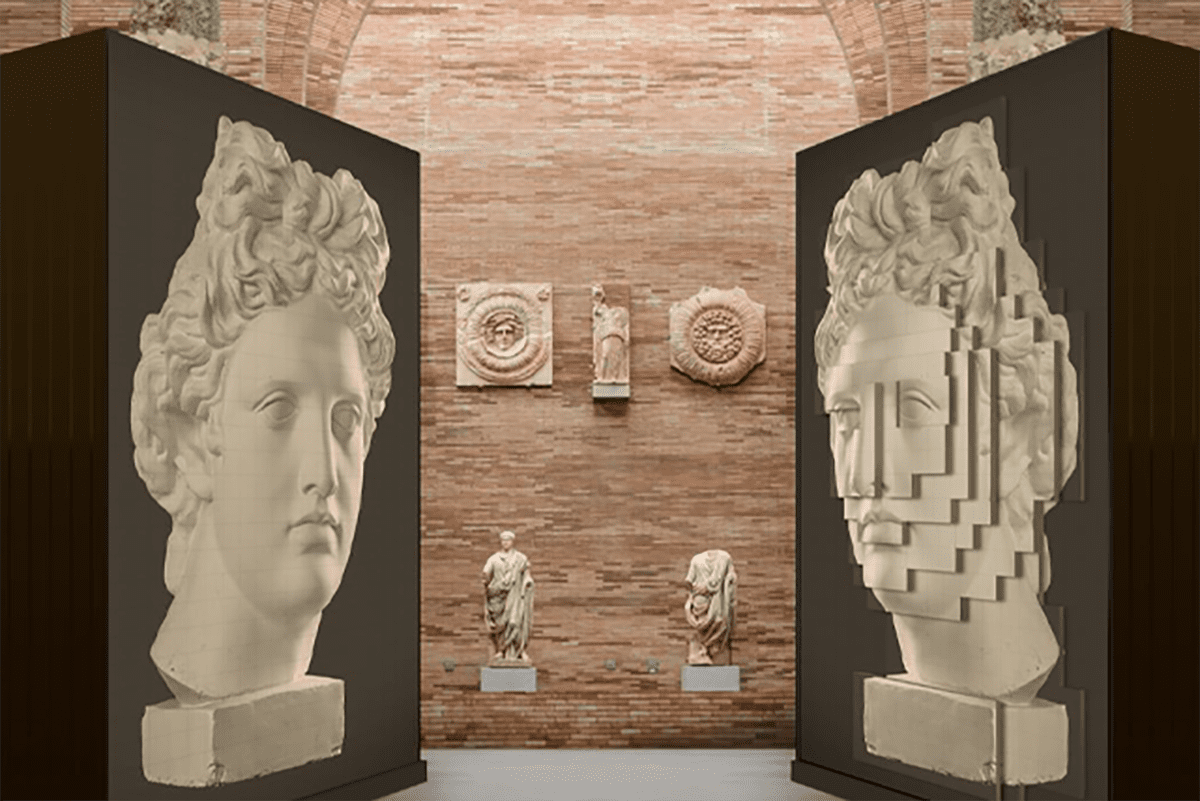
One-Way Communication vs. Interactive Experience:
Traditional LED screens are typically a one-way communication medium, where the audience can only passively receive the displayed content. In contrast, the Kinetic Display enables interaction through sensors, motion recognition, or touch controls. This allows the audience to engage with the screen, influencing its movement or content, creating a deeper connection between the viewer and the display.
3. How Does the Kinetic LED Wall Work?
Have you ever wondered how a screen can ripple like waves, fold like origami, or transform like a piece of art? The Kinetic Display is exactly this kind of groundbreaking technology. By combining precise mechanical structures, high-resolution LED modules, and an intelligent control system, it brings the screen to life, making it dynamic and ever-changing.
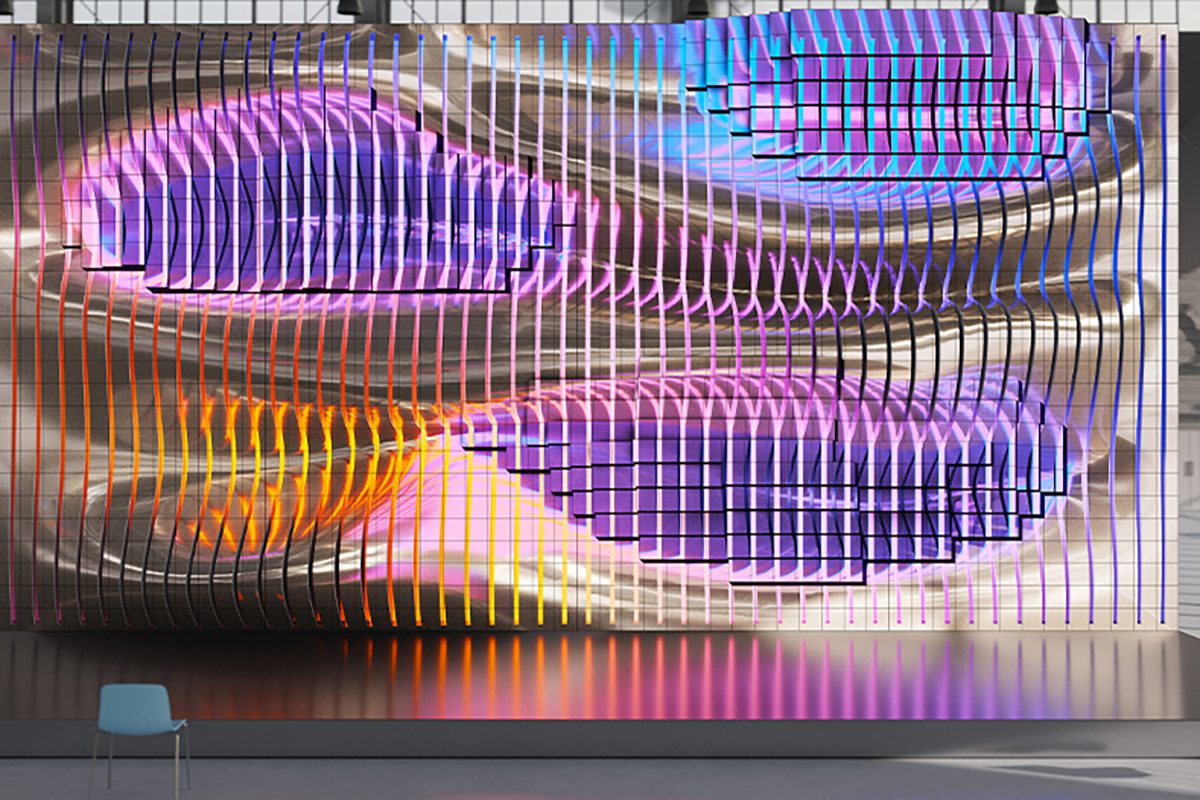
Movable LED Modules
Each LED module in the Kinetic Screen is mounted on a movable mechanical structure. With motor control, these modules can perform various actions such as rotation, translation, and folding. This allows the screen to simulate wave-like movements or expand and contract like origami, creating vivid and dynamic visual effects. When paired with rhythmic background music, each LED module can move like a musical note, adding a sense of rhythm to the display.
Flexible Mechanical System
The key difference of the Kinetic LED Screen lies in its added mechanical system. Behind each LED module, there are motors, hydraulic devices, or track systems that enable the modules to move forward, backward, up, down, left, right, or even rotate and flip.
High-Resolution Display
As an exceptional Kinetic Screen, relying solely on mechanical movement is not enough. The true essence lies in its high-resolution LED display modules. Only with clear content and rich color gradation can the Kinetic LED Wall truly become a visual masterpiece.
Intelligent Control System
At the heart of the Kinetic LED Wall is its intelligent control system. All LED modules and mechanical devices are managed by a computer control system. This system can follow pre-programmed instructions to make the LED wall move in specific rhythms, synchronized with lighting and sound effects, creating stunning visual experiences. For example, when the screen simulates ocean waves, the displayed content changes with the rise and fall of the waves, accompanied by sound and lighting effects, immersing the audience in a lifelike scene.
4. How Can Brands Benefit from Kinetic LED?
Upgrade Brand Image:
The Kinetic LED Wall’s moving effects naturally feel like “future tech.” When your ad screen isn’t just static but moves, rotates, and changes shape, people will think, “What kind of advanced tech is this?” This wow factor instantly links your brand to words like “innovation,” “high-end,” and “tech leader.”
Create Unique Memories:
Traditional LED screens often look the same, but the Kinetic Screen’s movement makes ads stand out. Studies show people spend 3x more time watching dynamic ads than static ones. When the screen moves with the content—like waves for a drink ad or shifting modules for a car ad—it grabs attention. People may even take photos and share them, spreading your brand further.
Interaction Creates Emotional Connection:
In Amsterdam’s “Movement of Thought,” visitors can use touchscreens or gesture sensors to control certain LED panels on the wall, moving them up or down to reveal hidden content or visual effects. Each action triggers a series of mechanical and lighting responses, making the entire screen feel like a complex machine. Through this interaction, it creates a dialogue with the audience, building an emotional connection.
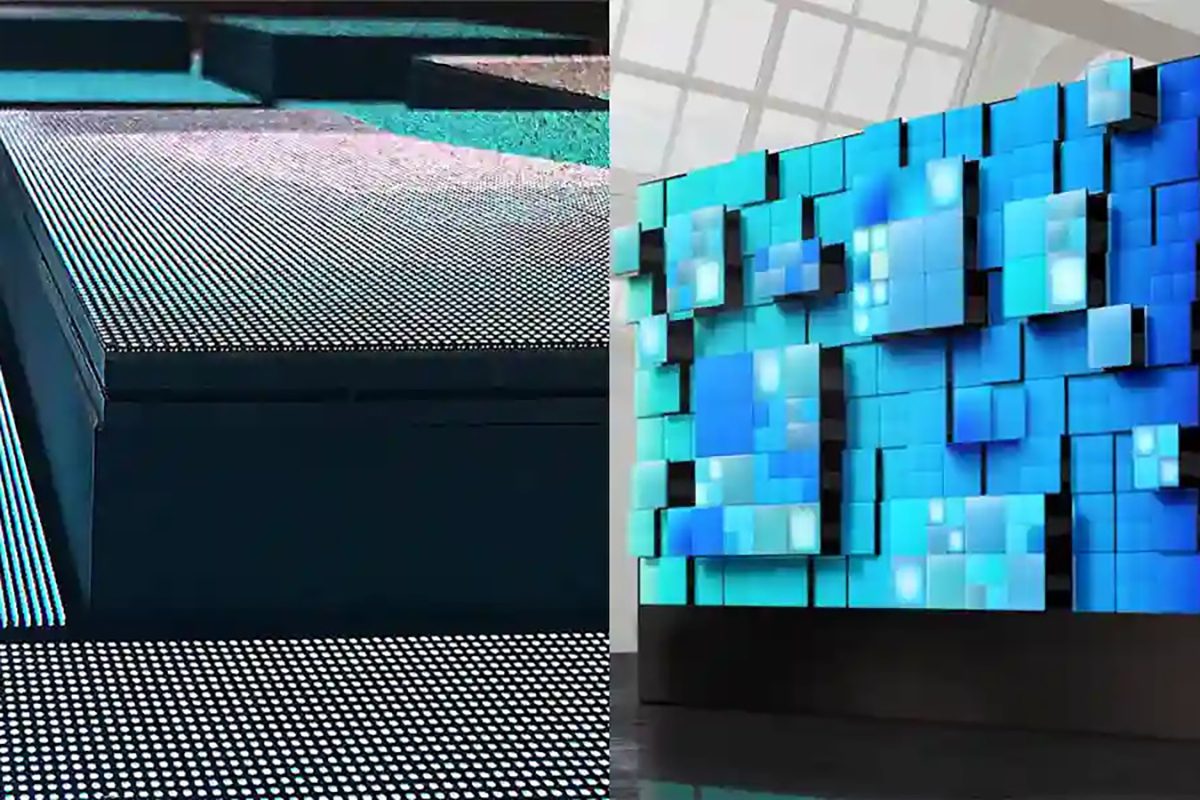
5. Case Study: Success Stories
Coca-Cola: The World’s First 3D Mechanical Billboard
In 2018, Coca-Cola launched the world’s first kinetic LED screen in New York’s Times Square. Featuring 1,760 movable modules, this screen earned a Guinness World Record as the “World’s First 3D Robotic Billboard.” According to Adweek, the installation quickly sparked a buzz on social media during its launch, with related topics reaching over a billion views. Industry media praised it as “redefining the possibilities of outdoor advertising.”

According to AdAge, on the day of its launch, the Coca-Cola kinetic LED screen attracted large crowds of tourists in Times Square, while social media discussions and exposure skyrocketed. As one of Coca-Cola’s most iconic global advertising displays, this kinetic LED screen significantly boosted the brand’s visibility and influence, becoming a classic case in the advertising industry. To this day, this creative concept is still widely referenced and adapted, providing new ideas for the development and innovation of both the advertising and display industries.
Stage Design for China’s Spring Festival Gala
In recent years, the stage design for CCTV’s Spring Festival Gala has extensively used movable, programmable LED modules that can transform in real-time according to the needs of the performances.
In the 2023 Spring Festival Gala, groups of LED modules were arranged in staggered layers to create three-dimensional scenes like “floating pavilions” and “suspended mountains,” allowing the audience to experience dynamic changes in physical space visually.

Dongdaemun, Seoul, South Korea – 2022: The World’s Largest Wave Screen
In 2022, the Kinetic Screen in Dongdaemun, Seoul, became the world’s largest wave screen at the time. It was meticulously developed over five years by PJ LINK (Panjing Intelligence). To withstand Seoul’s high humidity and salt-rich environment, the screen utilized anti-corrosion gold plating and spray coating techniques. Additionally, a triple-protection coating was applied to the electronic components for enhanced durability. The screen also underwent special noise reduction treatment, ensuring that even during high-speed movements of the LED modules, the surrounding office environment remained free from noise disturbances.
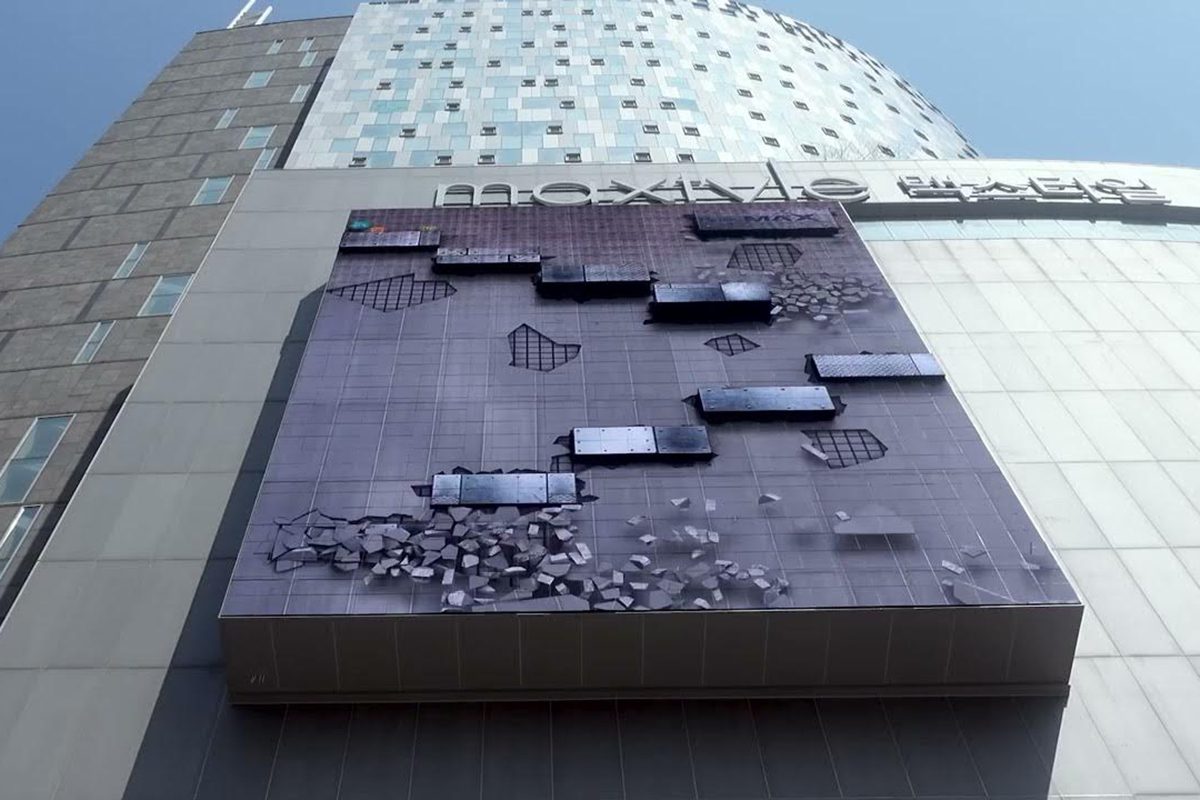
6.Challenges and Solutions for Implementing Kinetic LED Wall
High Costs:
Hardware Costs: The mechanical structure, precision motors, and high-resolution LED modules cost 3-5 times more than traditional screens.
Maintenance Complexity: Mechanical parts (e.g., motors, tracks) wear out and require regular maintenance. Outdoor projects also face environmental challenges like wind, sand, and rain.
Energy Consumption: Dynamic mechanical systems consume 20%-30% more power than static LED screens.
Solutions:
Modular Rental Model: Partner with suppliers for “on-demand leasing” to reduce upfront costs. For example, rent modular units for short-term events and purchase in phases for long-term projects.
Preventive Maintenance Plans: Sign annual maintenance contracts with suppliers for remote monitoring and regular inspections, reducing failure rates by over 60%.
Energy-Efficient Design: Use low-power motors and smart sleep modes (automatically entering low-energy states when no interaction is detected).
Technical Complexity:
Mechanical Failures: Frequent movement can cause motor overheating, track jams, or even module detachment.
Software-Hardware Coordination: Mechanical movements must synchronize with content playback within milliseconds for smooth operation, or else “motion lag” or “screen tearing” may occur.
Poor Outdoor Adaptability: Rain, wind, and temperature changes can affect mechanical precision, causing movement deviations.
Solutions:
Military-Grade Hardware Standards: Use modules with IP65 or higher ratings (dustproof and waterproof) and aerospace-grade bearings for motors, extending lifespan to 50,000 hours.
Redundant Control Systems: Implement a dual-system (main + backup) for real-time monitoring. If module anomalies (e.g., excessive displacement) are detected, switch to safe mode immediately.
Virtual Simulation Testing: Use 3D simulation software to test real-world conditions (e.g., wind, temperature, humidity) before installation, optimizing mechanical parameters in advance.
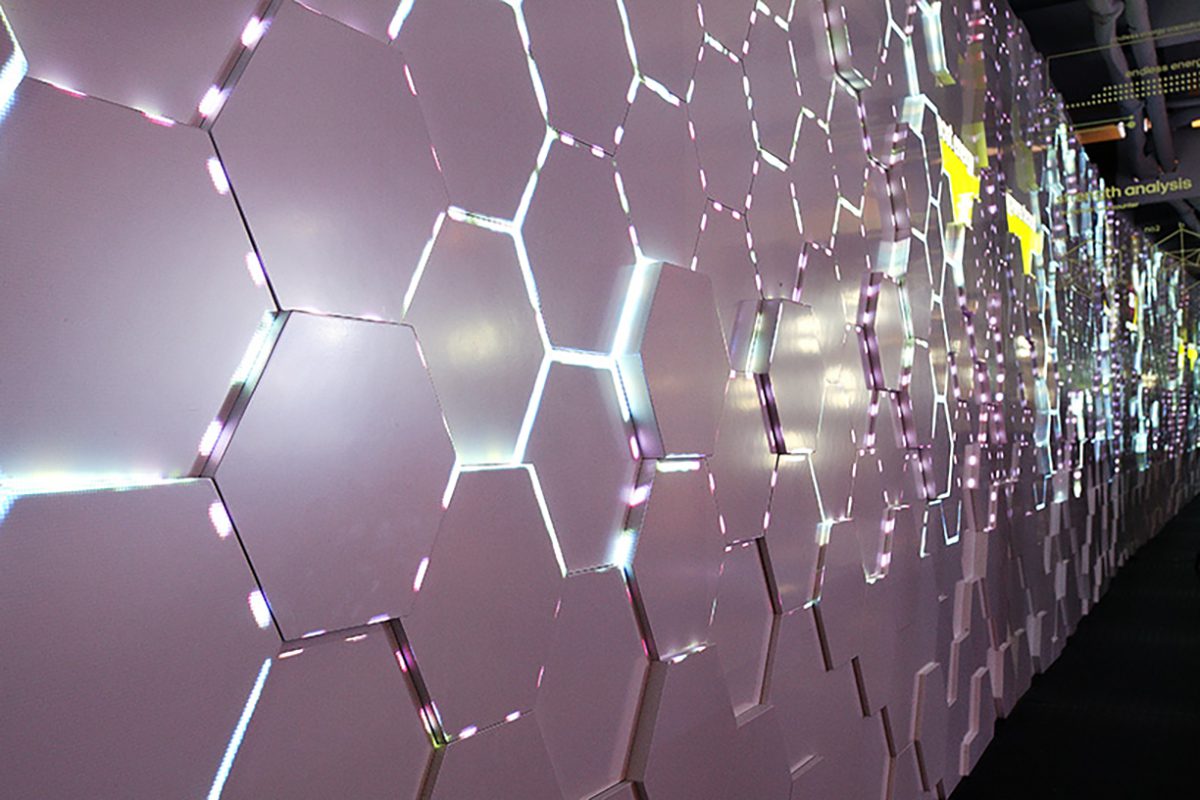
Content Creation Challenges
Creative Block: Traditional graphic designers may not understand “motion storytelling,” leading to content that focuses too much on flashy effects. (Content creators need some knowledge of mechanical motion principles.)
Technical Adaptation Difficulty: Dynamic content must precisely match mechanical motion paths, making production 2-3 times longer than regular videos.
Cost Surge: A 15-second high-quality dynamic video can cost 100,000 to 300,000 RMB.
Solutions:
Creative Toolbox: Suppliers provide a “dynamic material library” with common motion templates (e.g., waves, particle diffusion, mechanical transformations). Brands only need to replace graphics, reducing costs by 70%.
AI-Assisted Generation: Use AI tools (e.g., Notch, TouchDesigner) to automatically convert regular videos into dynamic scripts that fit mechanical motion rules.
Cross-Industry Collaboration: Partner with digital artists or VFX teams to turn brand stories into “movable visual language.” For example, a car brand transformed engine principles into rhythmic mechanical module movements.
High Installation Space Requirements
Insufficient Load Capacity: The weight of mechanical structures + LED modules may exceed building limits (e.g., mall glass walls cannot support the load).
Space Shape Limitations: Custom installation plans for curved or irregular spaces increase costs and time significantly.
Power and Cooling Needs: High-power mechanical systems require separate circuits, and poor heat dissipation can cause equipment failures.
Solutions:
Lightweight Design: Use carbon fiber frames and micro motors to reduce single module weight by 40% (e.g., from 15kg/module to 9kg in one project).
3D Scanning Pre-Adaptation: Use laser scanning to create a digital twin of the site before installation, automatically matching the best module layout.
Distributed Power Supply: Design independent circuits for mechanical systems and LED screens to avoid overload tripping.
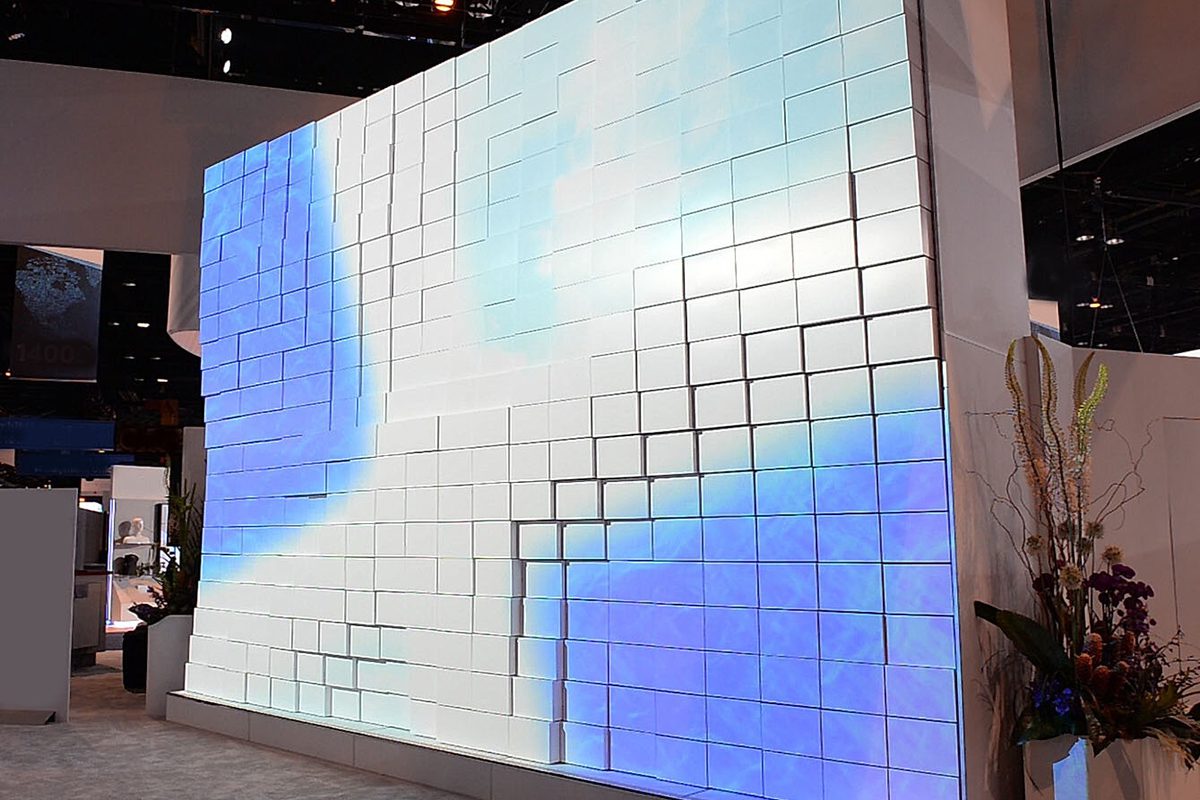
Low Audience Awareness
Overemphasis on Technology: Complex interactive designs confuse audiences, resulting in participation rates below 20%. Some viewers may even feel intimidated by moving walls.
Data Collection Challenges: It’s hard to measure interaction effectiveness (e.g., audience emotions, brand recall).
Solutions:
“Foolproof” Interaction: Replace complex gesture controls with motion sensors. Audiences only need to walk by to trigger effects.
Emotional Design: Combine interaction with brand storytelling—for example, a skincare brand uses “petal touch and bloom” to symbolize product repair power.
Biosensing Analysis: Use tracking cameras + AI to analyze audience expressions, dwell time, and smile frequency, then optimize content in real-time.
Regulations and Safety Compliance
Mechanical Safety Risks: For Kinetic Displays with close-range interaction, high-speed moving modules may injure audiences (especially children).
Solutions:
Safety Redundancy Design: Install infrared emergency stop sensors on module edges. The system cuts power within 0.1 seconds if an obstacle is detected.
7. How to Choose: Kinetic LED Wall VS Traditional LED Display
Visual Effects: Dynamic Display VS Static Presentation
Kinetic LED Wall
Combines mechanical motion with 3D content to achieve effects like folding, rotating, and undulating, enhancing a sense of depth and dimension.
Case Study: BMW used dynamic modules to simulate engine sounds, combining visual and auditory elements for a richer sensory experience.
Traditional LED Display
Primarily shows flat images, supporting 2D and 3D video playback, but the screen itself remains static.
Suitable for advertising, information display, and other scenarios that require basic visual communication.
Selection Advice
Consider Kinetic Display if you want to create a dynamic, multi-dimensional visual experience.
Choose traditional LED screens if your focus is on information delivery.
Cost: Initial Investment VS Operational Budget
Kinetic LED Screen
Higher equipment costs due to mechanical components, control systems, and customized content production.
In the long term, its unique display effects can lead to higher brand exposure and user engagement.
Traditional LED Display
Lower equipment and content production costs, with more economical installation and operation.
Suitable for short-term promotions or projects with strict cost control.
Selection Advice
Consider Kinetic LED Display if the budget allows and you aim to enhance influence through innovative displays.
Choose traditional LED screens if short-term investment and cost efficiency are priorities.
Interactivity: Multi-Dimensional Interaction VS Touch Sensing
Kinetic LED Wall
Uses mechanical motion, gesture recognition, motion sensing, and AI to create dynamic, multi-dimensional interactive effects.
Ideal for scenarios requiring enhanced audience immersion or brand interaction experiences.
Traditional LED Display
Supports touch, infrared sensing, and radar interaction for basic user engagement.
Suitable for applications like mall navigation, exhibition displays, and smart advertising.
Selection Advice
Consider Kinetic Screen if you want multi-layered interactive effects.
Choose traditional LED screens if basic touch or sensing interaction meets your needs.
Technical Requirements: Customization VS Standardization
Kinetic LED Wall
Mechanical parts require regular maintenance, such as lubrication and calibration. Outdoor equipment may need additional protective measures.
Relies on smart monitoring systems to reduce failure risks.
Traditional LED Display
Maintenance mainly involves screen cleaning and circuit checks, with lower failure rates.
Lower maintenance costs, suitable for scenarios with minimal upkeep requirements.
Selection Advice
Choose Kinetic LED Screen if you are willing to invest in long-term maintenance to ensure stable operation.
Opt for traditional LED screens if you prefer low maintenance costs and simpler management.
8. Summary
From the advertising industry to performance stages, Kinetic LED Screen is redefining the possibilities of visual communication in its unique way.
In the future, as technology continues to evolve, EagerLED will keep a close eye on industry trends and remain committed to providing customers with more innovative display solutions. Whether it’s Kinetic LED Wall or traditional LED displays, we will deliver exceptional audiovisual experiences with top-tier technology and service.


